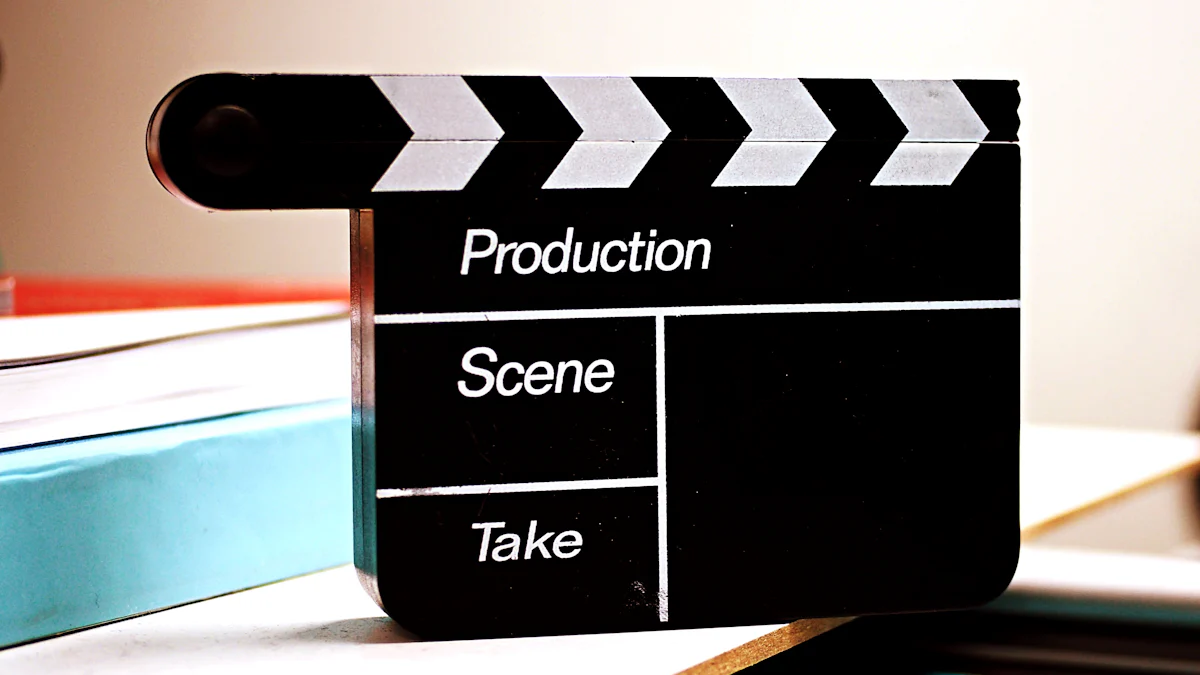Film Production
Budgeting for Your Film: A Comprehensive Guide for Producers
By
Alex Darke
July 23, 2024 09:56 pm
Budgeting plays a crucial role in film production. A well-planned budget ensures that resources are allocated efficiently. Producers must manage the film production budget to keep the project on track. Effective budgeting can make or break a film. Major studio movies often cost around $65 million, while smaller independent films can have budgets under $1 million. Producers need to balance costs for talent, crew, equipment, and marketing. Understanding these aspects helps in creating a successful film.
Understanding the Basics of Film Budgeting
Key Components of a Film Production Budget
Above-the-Line Costs
Above-the-line costs refer to expenses related to key creative talent. These include fees for the director, producers, writers, and principal actors. Major studio films allocate significant funds to these roles. Independent films often negotiate lower rates to stay within budget.
Below-the-Line Costs
Below-the-line costs cover technical and logistical aspects. These include crew salaries, equipment rental, and set construction. Effective management of these costs ensures smooth operations during production. Balancing these expenses with above-the-line costs is crucial.
Post-Production Costs
Post-production costs encompass editing, visual effects, and sound design. These processes transform raw footage into a polished film. Allocating sufficient funds for post-production ensures high-quality output. Neglecting these costs can compromise the final product.
Marketing and Distribution Costs
Marketing and distribution costs involve promoting and releasing the film. These include advertising, public relations, and distribution fees. A well-planned marketing strategy maximizes audience reach. Effective distribution ensures the film reaches theaters or streaming platforms.
Initial Budget Planning
Research and Development
Research and development involve initial planning stages. This includes concept development and preliminary research. Producers gather information on potential costs and resources. This phase lays the groundwork for accurate budgeting.
Script Breakdown
Script breakdown involves analyzing the script for budgeting purposes. Producers identify all elements required for each scene. This includes locations, props, and special effects. A detailed script breakdown helps in creating a realistic budget.
Preliminary Budget Estimates
Preliminary budget estimates provide an initial financial overview. Producers use gathered data to estimate overall costs. This includes above-the-line, below-the-line, and post-production expenses. Preliminary estimates guide further budget refinement and planning.
Detailed Budget Breakdown

Image Source: unsplash
Pre-Production Costs
Location Scouting
Location scouting involves finding suitable places for filming. Producers visit various sites to evaluate their suitability. The film production budget must cover travel expenses and permits. Securing the right locations enhances the film's visual appeal.
Casting
Casting involves selecting actors for the film. Producers organize auditions and screen tests. The film production budget must include fees for casting directors and actors. Proper casting ensures that characters come to life on screen.
Crew Hiring
Crew hiring involves recruiting skilled professionals. Producers hire cinematographers, sound engineers, and makeup artists. The film production budget must account for salaries and benefits. A competent crew ensures smooth production.
Production Costs
Equipment Rental
Equipment rental involves obtaining necessary gear. Producers rent cameras, lighting, and sound equipment. The film production budget must cover rental fees. High-quality equipment enhances the film's technical aspects.
Set Design and Construction
Set design and construction involve creating the film's environment. Producers hire designers and builders. The film production budget must include materials and labor costs. Well-designed sets contribute to the film's authenticity.
Daily Expenses
Daily expenses cover routine costs during filming. Producers allocate funds for meals, transportation, and accommodations. The film production budget must ensure that the crew's needs are met. Proper management of daily expenses keeps the team motivated.
Post-Production Costs
Editing
Editing involves refining the raw footage. Producers hire editors to cut and assemble scenes. The film production budget must cover editing software and labor costs. Skilled editing ensures a coherent and engaging narrative.
Visual Effects
Visual effects involve adding digital enhancements. Producers work with VFX artists to create special effects. The film production budget must include software and artist fees. High-quality visual effects elevate the film's impact.
Sound Design
Sound design involves creating the film's audio landscape. Producers hire sound designers to mix dialogue, music, and effects. The film production budget must cover studio time and equipment. Effective sound design enhances the viewer's experience.
Managing and Adjusting the Budget
Tracking Expenses
Using Budgeting Software
Tracking expenses accurately is crucial for maintaining a balanced film production budget. Saturation offers a cloud-based budgeting tool that simplifies expense tracking. This tool allows real-time collaboration and detailed reporting. Producers can track every dollar spent on the project. Wrapbook's Budget Tracker provides another excellent option. This software integrates with popular budgeting tools like Hot Budget and Movie Magic. Each transaction gets coded against the project Chart of Accounts. This feature ensures a line-by-line breakdown of costs.
Regular Financial Reviews
Regular financial reviews help keep the film production budget on track. Producers should schedule weekly or bi-weekly reviews. These reviews provide an opportunity to compare actual expenses with the budgeted amounts. Identifying discrepancies early helps in making necessary adjustments. Maintaining detailed records of all transactions is essential. These records serve as a reference during financial reviews. Consistent monitoring ensures that the project remains within budget.
Contingency Planning
Allocating a Contingency Fund
A contingency fund acts as a financial safety net. Allocating a portion of the film production budget for unexpected costs is wise. This fund covers unforeseen expenses that arise during production. Common unexpected costs include equipment repairs and location changes. Setting aside 5-10% of the total budget for contingencies is recommended. This allocation provides a buffer against financial surprises.
Adjusting for Unexpected Costs
Unexpected costs can disrupt the film production budget. Producers must remain flexible and ready to adjust the budget. When an unexpected expense arises, assess its impact on the overall budget. Determine if reallocating funds from other areas is possible. Prioritize essential expenses and cut non-essential costs if needed. Effective contingency planning minimizes the impact of unforeseen expenses. This approach ensures the project stays on track despite challenges.
Tools and Resources for Film Budgeting

Image Source: pexels
Budgeting Software Recommendations
Features to Look For
Choosing the right software can streamline your film production budget process. Look for software that offers real-time collaboration. This feature allows your team to work together seamlessly. Ensure the software provides detailed reporting. Detailed reports help you track every dollar spent. User-friendly interfaces make the software easy to navigate. Look for cloud-based options for accessibility from any location. Security features are also crucial to protect sensitive financial data.
Popular Software Options
Several software options cater to different needs. Filmustage offers tools for script breakdowns in seconds. This feature helps allocate resources efficiently. Wrapbook's Budget Tracker integrates with popular tools like Hot Budget. This integration ensures a line-by-line breakdown of costs. Movie Magic Budgeting remains a trusted choice for many producers. This software provides comprehensive budgeting features. Saturation offers a cloud-based tool for real-time expense tracking. Each of these options can enhance your film production budget management.
Templates and Worksheets
Benefits of Using Templates
Templates simplify the budgeting process. Pre-made templates provide a structured format. This structure ensures you include all necessary elements. Templates save time by offering a ready-made framework. You can customize templates to fit your specific needs. Using templates reduces the risk of overlooking important costs. Templates also help beginners understand how to craft a film production budget.
Where to Find Templates
Several resources offer free and paid templates. Online platforms like StudioBinder provide various templates. These templates cover different aspects of film production. Websites like No Film School also offer downloadable templates. Many film budgeting software options include built-in templates. Free Film Budgeting Software often comes with sample templates. These samples help you get started without additional costs. Utilizing these resources can make your budgeting process more efficient.
Thorough budgeting remains essential for film production success. A detailed film production budget ensures efficient resource allocation. Utilize the recommended tools and resources to streamline the budgeting process. Effective budgeting helps manage costs and avoid financial pitfalls. Proper planning and tracking enhance the overall quality of the film. Producers who prioritize budgeting often achieve better results. An accurate film production budget supports creative vision and project completion.

About the Author
Alex Darke is an Emmy-winning filmmaker, founder of the production company Momentous and owner of Filmmaking Central.

Filmmaking Central is a cutting-edge e-learning company dedicated to empowering aspiring filmmakers and content creators worldwide. With a robust library of comprehensive courses, expert-led workshops, and interactive learning materials, Filmmaking Central provides students with unparalleled access to industry professionals and innovative tools. By fostering an online community of passionate learners and storytellers, the platform aims to inspire creativity, develop essential skills, and ultimately cultivate the next generation of visionary filmmakers.
CONTACT
📍Las Vegas, NV
☎️ +1 888 494 5107
📧 hello@filmmakingcentral.com
SOCIAL
A Momentous Company © Filmmaking Central, All Rights Reserved. Here's our cookie policy page with all sorts of fun stuff. You know, privacy policy, disclaimer, and terms kind of stuff. Go back to the homepage or check out our courses and subscribe to our YouTube channel. You can also see our anti-SPAM policy, DCMA notice, earnings disclaimer, and affiliate disclosure.
